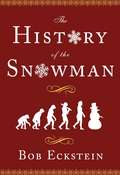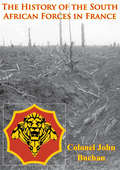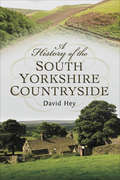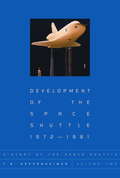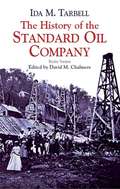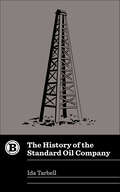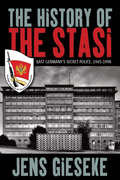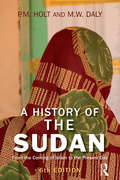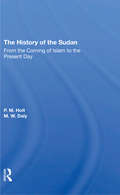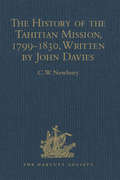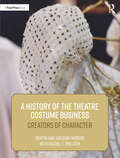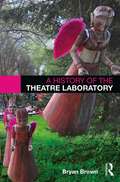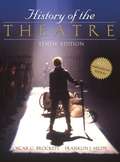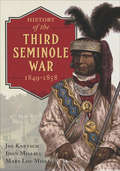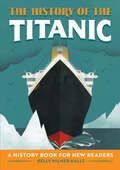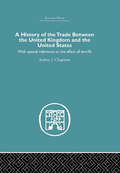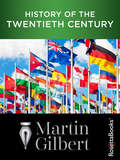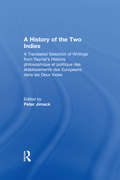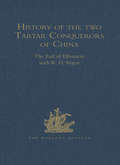- Table View
- List View
The History of the Snowman
by Bob EcksteinWho made the first snowman? Who first came up with the idea of placing snowballs on top of each other, and who decided they would use a carrot for a nose? Most puzzling of all: How can this mystery ever be solved, with all the evidence long since melted? The snowman appears everywhere on practically everything -- from knickknacks to greeting cards to seasonal sweaters we plan to return. Whenever we see big snowballs our first impulse is to deck them out with a top hat. Humorist and writer Bob Eckstein has long been fascinated by this ubiquitous symbol of wintertime fun -- and finally, for the first time, one of the world's most popular icons gets his due. A thoroughly entertaining exploration, The History of the Snowman travels back in time to shed light on the snowman's enigmatic past -- from the present day, in which the snowman reigns as the King of Kitsch, to the Dark Ages, with the creation of the very first snowman. Eckstein's curiosity began playfully enough, but soon snowballed into a (mostly) earnest quest of chasing Frosty around the world, into museums and libraries, and seeking out the advice of leading historians and scholars. The result is a riveting history that reaches back through centuries and across cultures -- sweeping from fifteenth-century Italian snowballs to eighteenth-century Russian ice sculptures to the regrettable "white-trash years" (1975-2000). The snowman is not just part of our childhood memories, but is an integral part of our world culture, appearing -- much like a frozen Forrest Gump -- alongside dignitaries and celebrities during momentous events. Again and again, the snowman pops up in rare prints, paintings, early movies, advertising and, over the past century, in every art form imaginable. And the jolly snowman -- ostensibly as pure as the driven snow -- also harbors a dark past full of political intrigue, sex, and violence. With more than two hundred illustrations and a special section of the best snowman cartoons, The History of the Snowman is a truly original winter classic -- smart, surprisingly enlightening, and quite simply the coolest book ever.
The History Of The South African Forces In France [Illustrated Edition]
by Colonel John BuchanIncludes 22 maps and 18 illustrationsTens of thousands of men came from all round the Empire to aid the British war effort in the First World War; men from Australia, New Zealand, Canada, India and South Africa fought and died on battlefields far away from their homes. Although these soldiers fought across many different countries for the Allied cause; each of the Nations is linked with a single battle or campaign in which their sacrifice stood out even in the horrific bloodshed of the First World War. For the South Africans it was the heroic, bloody struggle for Delville wood during the battle of the Somme; during which they held their ground under a furious counter assault by the Germans, the South African 1st Brigade suffered 80% casualties in that action alone. Basil Liddell Hart called this engagement "...the bloodiest battle hell of 1916."However as the esteemed author and soldier, Colonel John Buchan points out in his introduction to this classic Official History, the South Africans fought with equal bravery and distinction wherever and whenever they took to the field. As he states his book "...is a tale to be proud of, for among the many brigades in that field the South African Infantry Brigade may be said, without boasting, to have had no superior and not many equals."A fitting tribute to the many brave South African soldiers who fought and conquered during the First World War written by an acclaimed author.
A History of the South Yorkshire Countryside
by David HeySouth Yorkshire has some of the most varied countryside in England, ranging from the Pennine moors and the wooded hills and valleys in the west to the estate villages on the magnesian limestone escarpment and the lowlands in the east. Each of these different landscapes has been shaped by human activities over the centuries. This book tells the story of how the present landscape was created. It looks at buildings, fields, woods and moorland, navigable rivers and industrial remains, and the intriguing place-names that are associated with them.
A History of the Soviet Union from the Beginning to Its Legacy
by Peter KenezThis concise yet comprehensive textbook examines political, social, and cultural developments in the Soviet Union and the post-Soviet period. It begins by identifying the social tensions and political inconsistencies that spurred radical change in Russia's government, from the turn of the century to the revolution of 1917. Peter Kenez presents this revolution as a crisis of authority that the creation of the Soviet Union resolved. The text traces the progress of the Soviet Union through the 1920s, the years of the New Economic Policies, and into the Stalinist order. It illustrates how post-Stalin Soviet leaders struggled to find ways to rule the country without using Stalin's methods - but also without openly repudiating the past - and to negotiate a peaceful but antipathetic coexistence with the capitalist West. This updated third edition includes substantial new material, discussing the challenges Russia currently faces in the era of Putin.
A History of the Soviet Union from the Beginning to the End
by Peter KenezPeter Kenez's History of the Soviet Union examines not only political change, but also social and cultural developments. The book identifies the social tensions and political inconsistencies that spurred radical change in the government of Russia, beginning at the turn of the century, culminating in the revolution of 1917. Kenez envisions that revolution as a crisis of authority that posed the question, 'Who shall govern Russia'? This question was resolved with the creation of the Soviet Union. Kenez traces the development of the Soviet Union from the Revolution, through the 1920s, the years of the New Economic Policies - which he sees as crucial to any interpretation of the history of the Soviet Union - and into the Stalinist order. He shows how post-Stalin Soviet leaders struggled to find ways to rule the country without using Stalin's methods but also without openly repudiating the past, and to negotiate a peaceful but antipathetic coexistence with the capitalist West.
History of the Space Shuttle, Volume Two
by T. A. HeppenheimerBasing his work on virtually untapped NASA archives, T. A. Heppenheimer has produced the second volume of his definitive history of the space shuttle. Volume Two traces the development of the shuttle through a decade of engineering setbacks and breakthroughs, program-management challenges, and political strategizing, culminating in the first launch in April 1981. The focus is on the engineering challenges--propulsion, thermal protection, electronics, onboard systems--and the author covers in depth the alternative vehicles developed by the U.S. Air Force and European countries. The first launch entailed a monumental amount of planning and preparation that Heppenheimer explains in detail.
The History of the Standard Oil Company: Briefer Version
by David M. Chalmers Ida M. TarbellMuckrakers -- a term coined in 1906 by President Theodore Roosevelt -- referred to American journalists, novelists and critics who, in the early 20th century, attempted to expose corruption in politics and the abuses of big business. One publication spearheading these exposés was McClures Magazine, and Ida Tarbell was the writer whose dramatic revelations eventually lead to effective regulation of the Standard Oil Company. Her story, serialized by McClure's in 1902 and 1903, tells the history of John D. Rockefeller's company. The first major industrial monopoly in the U.S., Standard Oil, in 1901, was the largest corporation in the country, and at its peak, controlled as much as eighty-five percent of oil refining in America. But with all his wealth and power, Rockfeller could not protect himself from Tarbell. Her story of the company, which became a model for militant journalists in the future, managed to place the blame for increasingly commercialized American ideals and practical behavior at Rockefeller's doorstep. Combining descriptions of his business practices with his personal characteristics and even his physical appearance, Tarbell created an image of a cunning and ruthless person -- a picture that not even decades of Rockefeller philanthropy were able to dispel. This edition (the "briefer version" of her book; the original was more than 800 pages.) makes a great muckraking classic much more accessible to readers. As such, it will be invaluable to students and teachers of American economic history and a fascinating read for anyone interested in the muckraking era and the days of unregulated big business.
The History of the Standard Oil Company (Belt Revivals)
by Ida TarbellPart of Belt's Revivals Series, a classic of muckraking journalism with a new introduction by Elizabeth Catte, author of What You Are Getting Wrong About Appalachia and Pure America . Cleveland oil tycoon Jo
The History of the Stasi: East Germany's Secret Police, 1945-1990
by Jens GiesekeThe East German Ministry for State Security stood for Stalinist oppression and all-encompassing surveillance. The "shield and sword of the party," it secured the rule of the Communist Party for more than forty years, and by the 1980s it had become the largest secret-police apparatus in the world, per capita. Jens Gieseke tells the story of the Stasi, a feared secret-police force and a highly professional intelligence service. He inquires into the mechanisms of dictatorship and the day-to-day effects of surveillance and suspicion. Masterful and thorough at once, he takes the reader through this dark chapter of German postwar history, supplying key information on perpetrators, informers, and victims. In an assessment of post-communist memory politics, he critically discusses the consequences of opening the files and the outcomes of the Stasi debate in reunified Germany. A major guide for research on communist secret-police forces, this book is considered the standard reference work on the Stasi and has already been translated into a number of Eastern European languages.
A History of the Sudan: From the Coming of Islam to the Present Day
by M. W. Daly P. M. HoltA History of the Sudan by Martin Daly and PM Holt, sixth edition, has been fully revised and updated and covers the most recent developments that have occurred in Sudan over the last nine years, including the crisis in Darfur. The most notable developments that this text covers includes the decades-long civil war in the South (with the signing of the Comprehensive Peace Agreement in January 2005); the emergence of the Sudan as an oil-producer and exporter, and its resulting higher profile in global economic affairs, notably as a partner of China; the emergence of al-Qaeda, the relations of Sudanese authorities with Osama bin Laden (whose headquarters were in the Sudan in the 1990s), and the Sudanese government's complicated relations with the West. This text is key introductory reading for any student of North Africa.
The History Of The Sudan: From The Coming Of Islam To The Present Day
by P. M. Holt M. W. DalyThis volume provides an updated history of Sudan from the first contacts between the Muslim Arabs and the Christian Nubians to the invasion by the forces of Muhammad 'Ali Pasha. It includes information on the period before Turko-Egyptian invasion especially concerning the coming of Islam.
The History of the Tahitian Mission, 1799-1830, Written by John Davies, Missionary to the South Sea Islands: With Supplementary Papers of the Missionaries (Hakluyt Society, Second Series #116)
by C. W. NewburyIn the wake of the navigators who finally opened up the Pacific came missionaries, traders and finally administrators. In the early decades of the 19th century Polynesia was a rich field for the curious and the calculating, for writers and adventurers. The pioneer European settlers in Eastern Polynesia were ministers and mechanics sent out on the crest of an Evangelical wave the merged with the currents and eddies of trade and whaling to break down the isolation of the islands and their inhabitants. Among the pioneers was Welshman John Davies (1772-1855) who spent just over 50 years of his life on Tahiti and neighbouring islands. He witnessed the rise of the Pomare dynasty, conversion to Christianity, reaction to attempts at theocratic government, and the gradual encroachment of alien commerce and European rule. His colleagues have made their contribution to the history and anthropology of Polynesia. Davies himself, teacher, linguist and careful observer, wrote his own story of the Mission, its personalities and their contact with the Polynesians, from the early phase of disillusionment through three decades of political and economic change, destruction and reconstruction. From this contact there emerged the uneasy compromise of missionary and indigenous beliefs and institutions that characterized Tahiti and its neighbours before and after the advent of French administration. Davies's manuscript History is here edited and annotated, supplemented by the writings of other missionaries and presented as a contribution to the literature of the Pacific. This is a new print-on-demand hardback edition of the volume first published in 1961.
A History of the Theatre Costume Business: Creators of Character
by Triffin I. Morris Gregory DL MorrisA History of the Theatre Costume Business is the first-ever comprehensive book on the subject, as related by award-winning actors and designers, and first hand by the drapers, tailors, and craftspeople who make the clothes that dazzle on stage. Readers will learn why stage clothes are made today, by whom, and how. They will also learn how today’s shops and ateliers arose from the shops and makers who founded the business. This never-before-told story shows that there is as much drama behind the scenes as there is in the performance: famous actors relate their intimate experiences in the fitting room, the glories of gorgeous costumes, and the mortification when things go wrong, while the costume makers explain how famous shows were created with toil, tears, and sweat, and sometimes even a little blood. This is history told by the people who were present at the creation – some of whom are no longer around to tell their own story. Based on original research and first-hand reporting, A History of the Theatre Costume Business is written for theatre professionals: actors, directors, producers, costume makers, and designers. It is also an excellent resource for all theatregoers who have marveled at the gorgeous dresses and fanciful costumes that create the magic on stage, as well as for the next generation of drapers and designers.
A History of the Theatre Costume Business: Creators of Character
by Triffin I. Morris Gregory DL Morris Rachel E. PollockA History of the Theatre Costume Business is the first-ever comprehensive book on the subject, as related by award-winning actors and designers, and first hand by the drapers, tailors, and craftspeople who make the clothes that dazzle on stage.Readers will learn why stage clothes are made today, by whom, and how. They will also learn how today’s shops and ateliers arose from the shops and makers who founded the business. This never-before-told story shows that there is as much drama behind the scenes as there is in the performance: famous actors relate their intimate experiences in the fitting room, the glories of gorgeous costumes, and the mortification when things go wrong, while the costume makers explain how famous shows were created with toil, tears, and sweat, and sometimes even a little blood. This is history told by the people who were present at the creation – some of whom are no longer around to tell their own story. Based on original research and first-hand reporting, A History of the Theatre Costume Business is written for theatre professionals: actors, directors, producers, costume makers, and designers. It is also an excellent resource for all theatregoers who have marveled at the gorgeous dresses and fanciful costumes that create the magic on stage, as well as for the next generation of drapers and designers.
A History of the Theatre Laboratory
by Bryan BrownThe term ‘theatre laboratory’ has entered the regular lexicon of theatre artists, producers, scholars and critics alike, yet use of the term is far from unified, often operating as an catch-all for a web of intertwining practices, territories, pedagogies and ideologies. Russian theatre, however, has seen a clear emergence of laboratory practice that can be divided into two distinct organisational structures: the studio and the masterskaya (artisanal guild). By assessing these structures, Bryan Brown offers two archetypes of group organisation that can be applied across the arts and sciences, and reveals a complex history of the laboratory’s characteristics and functions that support the term’s use in theatre. This book’s discursive, historical approach has been informed substantially by contemporary practice, through interviews with and examinations of practitioners including Slava Polunin, Anatoli Vassiliev, Sergei Zhenovach and Dmitry Krymov.
History Of the Theatre (Tenth Edition)
by Oscar G. Brockett Franklin J. HildyKnown as the "bible" of theatre history, Brockett and Hildy's History of the Theatre is the most comprehensive and widely used survey of theatre history in the market. This 40th Anniversary Edition retains all of the traditional features that have made History of the Theatre the most successful text of its kind, including worldwide coverage, more than 530 photos and illustrations, useful maps, and the expertise of Oscar G. Brockett and Franklin J. Hildy, two of the most widely respected theatre historians in the field. As with every edition, the text reflects the current state of knowledge and brings the history of theatre up to the present. This tenth edition continues to provide the most thorough and accurate assessment of theatre history available.
History of the Third Seminole War: 1849-1858
by Joe Knetsch John Missall Mary Lou MissallThis definitive account of the final war between the US government and Florida’s Seminole tribe “brings to life a conflict that is largely ignored” (San Francisco Book Review).Spanning a period of over forty years (1817-1858), the three Seminole Wars were America’s longest, costliest, and deadliest Indian wars, surpassing the more famous ones fought in the West. After an uneasy peace following the conclusion of the second Seminole War in 1842, a series of hostile events, followed by a string of murders in 1849 and 1850, made confrontation inevitable. The war was also known as the “Billy Bowlegs War” because Billy Bowlegs, Holata Micco, was the central Seminole leader in this the last Indian war to be fought east of the Mississippi River. Pushed by increasing encroachment into their territory, he led a raid near Fort Myers. A series of violent skirmishes ensued. The vastness of the Floridian wilderness and the difficulties of the terrain and climate caused problems for the army, but they had learned lessons from the second war, and, amongst other new tactics, employed greater use of boats, eventually securing victory by cutting off food supplies.History of the Third Seminole War is a detailed narrative of the war and its causes, containing numerous firsthand accounts from participants in the conflict, derived from virtually all the available primary sources, collected over many years. “Any reader interested in learning more about Indian wars, Army history, or Florida history will profit from reading this book,” as well as Civil War enthusiasts, since many of the officers earned their stripes in the earlier conflict (The Journal of America’s Military Past).
The History of the Titanic: A History Book for New Readers (The History Of: A Biography Series for New Readers)
by Kelly Milner HallsDiscover the history of the Titanic—an exploration of the shipwreck that shook the world for kids ages 6 to 9 On April 10, 1912, the Titanic sailed away from Southampton, England, on its very first voyage. It was the biggest ship ever built, and many people believed it was unsinkable. Four days later they were proven wrong. The sinking of the Titanic is a tragedy that we still remember today. One of the most comprehensive Titanic books for kids available, this colorfully illustrated story takes you through the ship's construction, its tragic voyage, and the legacy it left behind. This standout among Titanic books for kids features: A visual timeline—Easily understand important details of the Titanic's construction and journey thanks to a timeline marking the major milestones. Core curriculum—Learn the Who, What, Where, When, Why, and How of this fateful voyage, and take a quick quiz to test your knowledge after you finish this top choice in Titanic books for kids. Lasting changes—Explore thought-provoking questions that help you better understand how the sinking of the Titanic affected the world you live in today. Learn about this unforgettable disaster in this fascinating Titanic book for kids.
History of the Trade Between the United Kingdom and the United States: With Special Reference to the Effects of Tarriffs
by Sydney J. ChapmanFirst published in 2005. Routledge is an imprint of Taylor & Francis, an informa company.
History of the Twentieth Century: The Concise Edition Of The Acclaimed World History
by Martin GilbertA chronological compilation of twentieth-century world events in one volume—from the acclaimed historian and biographer of Winston S. Churchill. The twentieth century has been one of the most unique in human history. It has seen the rise of some of humanity&’s most important advances to date, as well as many of its most violent and terrifying wars. This is a condensed version of renowned historian Martin Gilbert&’s masterful examination of the century&’s history, offering the highlights of a three-volume work that covers more than three thousand pages. From the invention of aviation to the rise of the Internet, and from events and cataclysmic changes in Europe to those in Asia, Africa, and North America, Martin examines art, literature, war, religion, life and death, and celebration and renewal across the globe, and throughout this turbulent and astonishing century.
A History of the Two Indies: A Translated Selection of Writings from Raynal's Histoire philosophique et politique des établissements des Européens dans les Deux Indes
by Peter JimackFirst published in 1770 and running to over one million words, Raynal’s Histoire philosophique et politique des établissements des Européens dans les Deux Indes was an immediate bestseller that was to go through numerous editions in various languages. Taking a radical anti-imperialistic stance, the nineteen books that comprised the original work covered the history of European colonisation of India, the East Indies, China, parts of Africa, and the Americas. Much of the success, and subsequent reputation, of the Histoire was based on its attacks on tyranny, slavery and colonial exploitation, and it quickly became one of the basic texts for the humanitarian movement. In this current edition, Peter Jimack has chosen a representative selection of passages from all books of the Histoire that shows the breadth and scope of the work. His translation into English of these from the standard enlarged 1780 edition captures all the vitality and passion of Raynal and his co-authors (including Diderot) and highlights just why this book had such a profound and enduring impact. A helpful and detailed Introduction sets the work in its historical and philosophical context. As well as making available one of the key radical works of the later eighteenth century, this edition reveals much about the impact of foreign countries and cultures on Enlightenment thinking. Dealing with the activities of all the main European colonial powers, France, Spain, Britain, The Netherlands and Portugal, it reveals much about their trading and imperial ventures across the East Indies and Americas, and the effect this was to have on both sides of the Atlantic. As such this edition will prove invaluable for all students and scholars interested in eighteenth-century colonialism, political theory, the history of foreign trade, slavery or Enlightenment philosophy.
History of the two Tartar Conquerors of China, including the two Journeys into Tartary of Father Ferdinand Verbiest in the Suite of the Emperor Kang-hi: From the French of Père Pierre Joseph d'Orléans, of the Company of Jesus. To which is added Father Pereira's Journey into Tartary in the Suite of the same Emperor, From the Dutch of Nicholaas Witsen (Hakluyt Society, First Series)
by R.H. MajorThe first part is translated from the 1688, Paris, edition; the narrative of Father Pereira's journey and the text of two letters by Father Verbiest are from the 1692, Amsterdam, edition. The supplementary material consists of the 1854 annual report. This is a new print-on-demand hardback edition of the volume first published in 1854.
